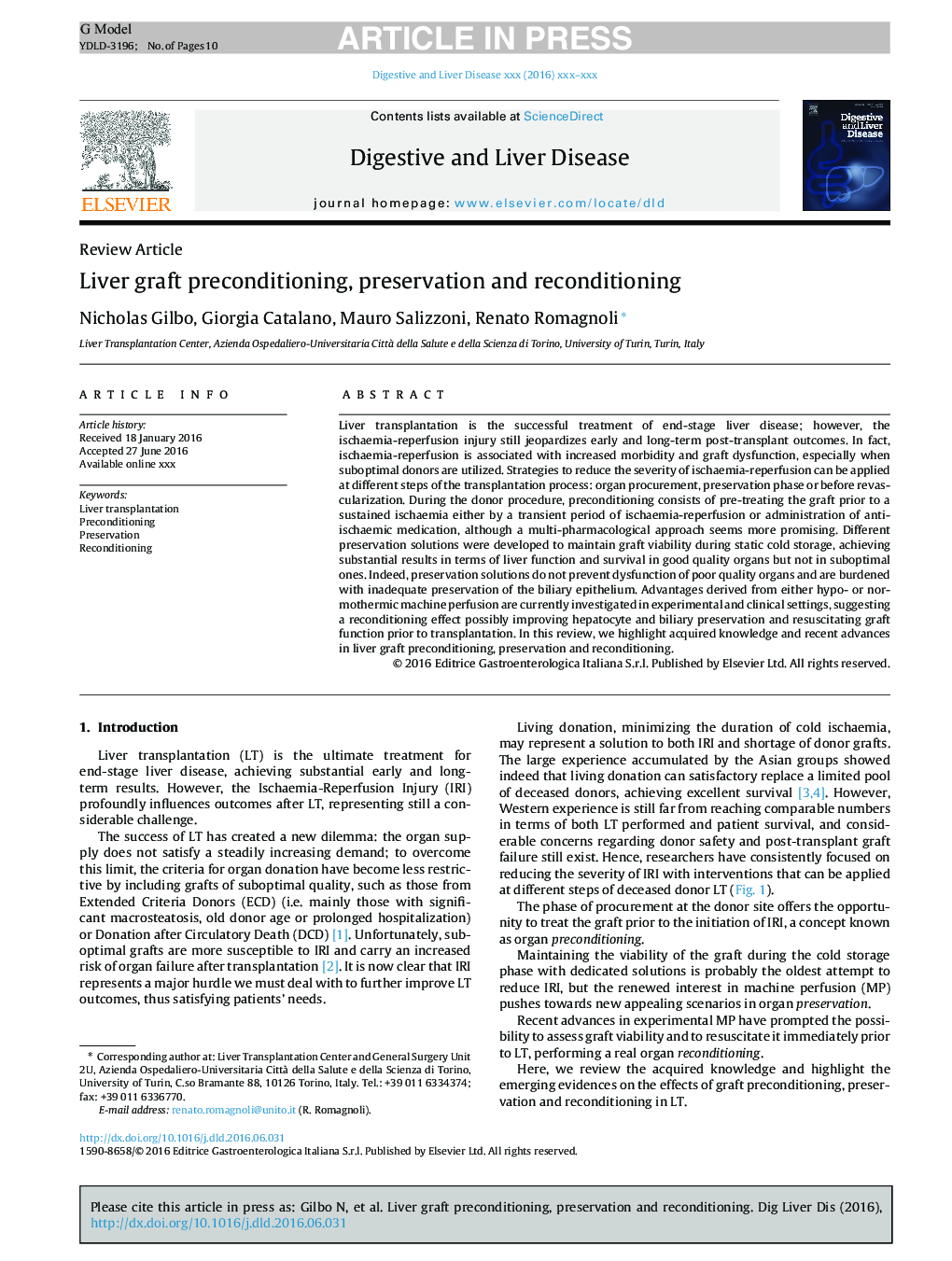| Article ID | Journal | Published Year | Pages | File Type |
|---|---|---|---|---|
| 5655866 | Digestive and Liver Disease | 2016 | 10 Pages |
Abstract
Liver transplantation is the successful treatment of end-stage liver disease; however, the ischaemia-reperfusion injury still jeopardizes early and long-term post-transplant outcomes. In fact, ischaemia-reperfusion is associated with increased morbidity and graft dysfunction, especially when suboptimal donors are utilized. Strategies to reduce the severity of ischaemia-reperfusion can be applied at different steps of the transplantation process: organ procurement, preservation phase or before revascularization. During the donor procedure, preconditioning consists of pre-treating the graft prior to a sustained ischaemia either by a transient period of ischaemia-reperfusion or administration of anti-ischaemic medication, although a multi-pharmacological approach seems more promising. Different preservation solutions were developed to maintain graft viability during static cold storage, achieving substantial results in terms of liver function and survival in good quality organs but not in suboptimal ones. Indeed, preservation solutions do not prevent dysfunction of poor quality organs and are burdened with inadequate preservation of the biliary epithelium. Advantages derived from either hypo- or normothermic machine perfusion are currently investigated in experimental and clinical settings, suggesting a reconditioning effect possibly improving hepatocyte and biliary preservation and resuscitating graft function prior to transplantation. In this review, we highlight acquired knowledge and recent advances in liver graft preconditioning, preservation and reconditioning.
Related Topics
Health Sciences
Medicine and Dentistry
Endocrinology, Diabetes and Metabolism
Authors
Nicholas Gilbo, Giorgia Catalano, Mauro Salizzoni, Renato Romagnoli,
